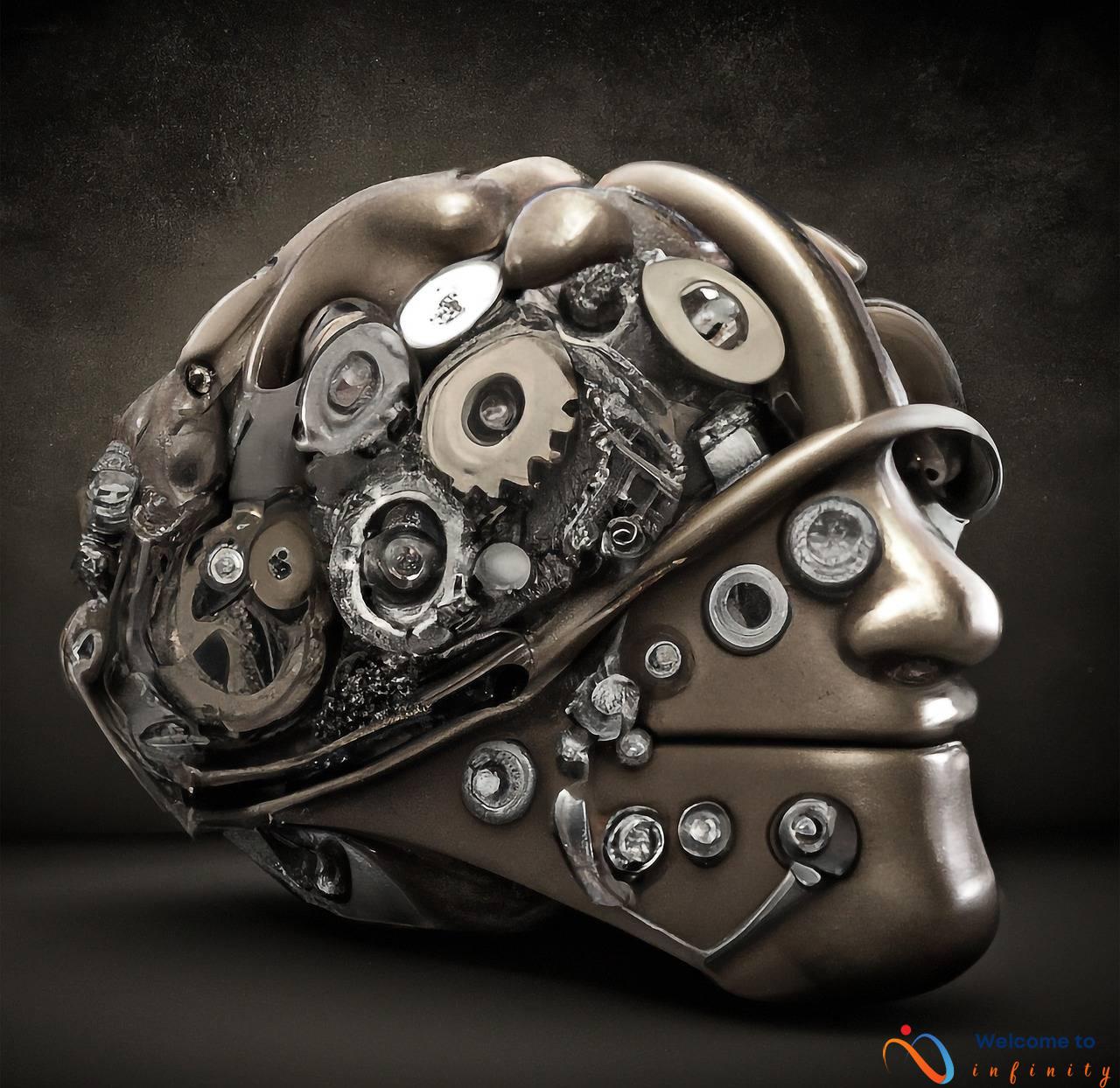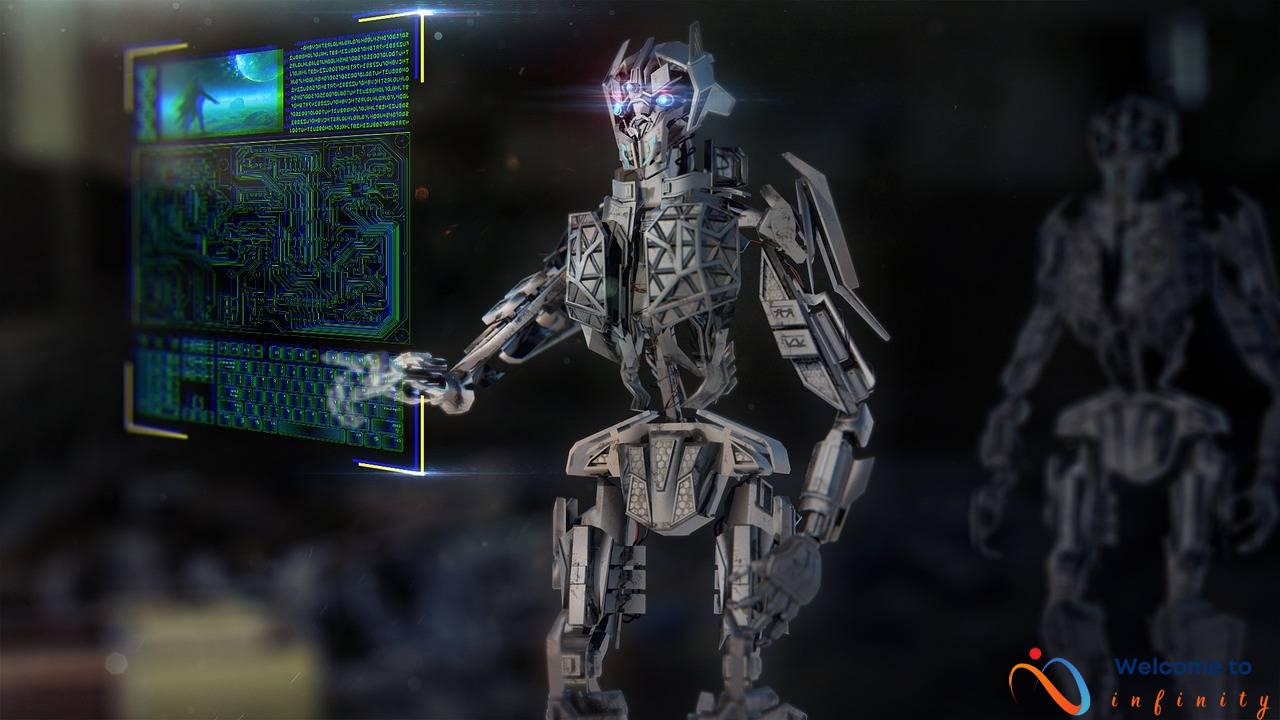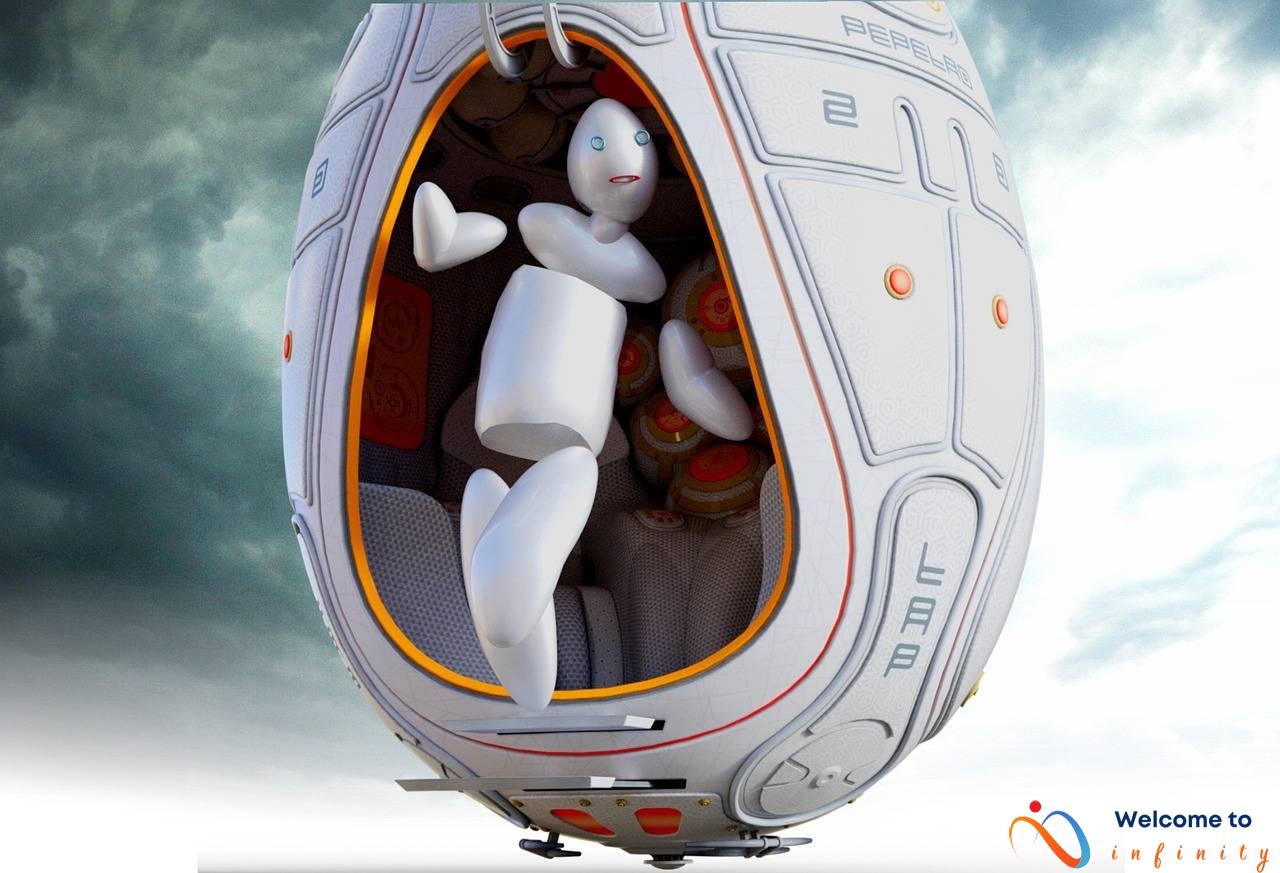Machine learning (ML) is rapidly advancing in image recognition and object detection applications. the technology allows computers to automatically classify and identify objects within images with high accuracy. This is particularly useful in fields such as self-driving cars, medical imaging, and security systems.
Image classification involves training an ML algorithm to recognize and classify objects within an image. This is done by feeding the algorithm thousands of images with labeled objects. As the algorithm learns, it becomes better at identifying objects within new images. Some popular machine learning models used for image classification include Convolutional Neural Networks (CNN), Residual Networks (ResNets), and Inception models.
Object detection takes image recognition a step further by not only identifying the objects within an image but also detecting their location. In other words, object detection algorithms can locate and draw boxes around the objects they identify within an image. One popular ML model for object detection is Faster R-CNN, which uses a Region Proposal Network (RPN) to generate proposals on where objects may be located. YOLO, or You Only Look Once, is another ML model used for object detection with real-time performance.
Image Classification
Image classification is the process of categorizing images into specific groups. Machine learning (ML) algorithms can be used to analyze millions of images and learn how to identify objects within them. This technology uses large amounts of data to recognize patterns and help with predictions.
ML models for image classification can be trained on labeled data, where the characteristics of the object are already identified, or on unlabeled data where the algorithm learns to recognize patterns on its own. Popular image classification models include Convolutional Neural Networks (CNNs), ResNets, and Inception, each with their own unique approach.
One benefit of using ML for image classification is increased accuracy compared to manual classification methods. Human error is always possible when manually analyzing images and identifying objects. ML eliminates this error factor and can analyze images with greater efficiency.
- Convolutional Neural Networks (CNNs): A deep learning algorithm used for image classification that is modeled after the process of visual recognition in humans.
- ResNets: A variation of CNNs that includes residual connections for deeper networks and higher accuracy.
- Inception: A CNN architecture with multiple layers that can parallel process image features at different scales.
Image classification has many applications, such as identifying objects in images from social media platforms or analyzing medical images for disease detection. It can also be used to categorize images for easier organization and searchability.
Object Detection
Object detection is a process of using machine learning techniques to detect specific objects within an image. In contrast to image classification, object detection aims to identify and locate the whereabouts of objects in an image. The process of object detection involves the use of both image classification and localization by identifying the presence of an object within an image and marking its location.
One of the most popular machine learning models used in object detection is Faster R-CNN. The Faster R-CNN model uses a Region Proposal Network (RPN) to identify regions of interest in an image. It then processes these regions through a classifier to verify if the object is present or not. If the object is detected, it outlines its position with a bounding box. The advantage of Faster R-CNN is that it can precisely detect the location of objects within an image, making it particularly useful for real-time object detection applications.
Another popular model used for object detection is YOLO (You Only Look Once), which is known for its high speed and real-time performance. YOLO takes a completely different approach from Faster R-CNN by dividing the input image into a grid and then processing each grid cell in parallel. It then associates each cell with a bounding box to identify and locate objects. The advantage of YOLO is that it processes the image in a single pass, allowing it to operate in real-time and with high accuracy.
Object detection has various real-world applications. One of the most significant applications of object detection is in the field of self-driving cars, where it is used to detect obstacles and classify them in real-time. Object detection is also widely used in medical imaging for automated diagnosis of diseases and identifying abnormalities such as tumors and other issues.
Faster R-CNN
Faster R-CNN is a widely used machine learning model for object detection in images. This model was introduced in 2015 and has since revolutionized the world of object detection. Faster R-CNN uses a two-stage detection process. In the first stage, it proposes regions of interest based on a convolutional neural network (CNN). These regions are then fed into a region proposal network (RPN) in the second stage to identify whether any object is present in that region.
The RPN in Faster R-CNN is a fully convolutional network that predicts the objectness score and bounding box regression offsets for all anchor boxes. The anchor boxes are generated by placing a set of predefined boxes over the image in different scales and aspect ratios. The RPN predicts the score and regression offset for each anchor box, and the boxes with a high objectness score are selected as proposals. These proposals are used by the second stage to predict the object classes and refine the bounding boxes.
The workflow of Faster R-CNN involves extracting features from an input image using a CNN, proposing regions of interest based on the features, passing the proposed regions through an RPN to identify objectness and bounding box offsets, and finally passing the proposals with objectness scores to a classifier to predict the object classes and refine the bounding boxes.
Faster R-CNN has proven to be a powerful tool for object detection in a variety of applications, from pedestrian detection in self-driving cars to detecting anomalies in medical images. Its ability to accurately detect objects in real-time with high precision has made it a go-to solution for many image recognition tasks.
RPN
The Region Proposal Network (RPN) is a neural network used in Faster R-CNN for object detection in images. The network generates region proposals, which are regions of interest that may contain objects. These proposals are then used by the network to classify and locate objects within the image.
RPN operates by using a sliding window approach over the image, which is similar to the approach used by the convolutional neural networks (CNNs) typically used for image recognition tasks. However, unlike a typical CNN, RPN generates multiple proposals per image, rather than one classification output.
To generate proposals, RPN uses anchor boxes, which are pre-defined bounding boxes of different scales and ratios. RPN then generates proposals by adjusting the size and position of these anchor boxes based on the features detected by the CNN.
The output of RPN is a set of proposals, with each proposal consisting of a bounding box and a score that represents the likelihood of it containing an object. These proposals are then passed on to the next stage of the Faster R-CNN network for classification and localization.
In summary, the RPN is a key component of the Faster R-CNN model, which is widely used for object detection in computer vision tasks. The network generates region proposals that are used to classify and locate objects within an image, and its sliding window approach and use of anchor boxes make it a powerful tool for accurate and efficient object detection.
Faster R-CNN Workflow
Faster R-CNN, or Region-based Convolutional Neural Network, is a popular machine learning model used for object detection in images. Its workflow involves several steps that make it effective in identifying objects within an image.
The first step is to resize the input image to the desired size. This ensures that the image fits the required dimensions for object detection. Then, the image is fed into the Faster R-CNN model, which uses its Region Proposal Network (RPN) to identify regions of interest within the image.
The RPN generates object proposals, which represent potential objects within the image. These proposals are refined using a RoI pooling layer, which extracts a fixed-size feature map of the region. The feature map is then classified and localized using two fully connected layers: a classifier layer and a bounding box regressor layer.
Once the objects have been identified and localized, they are filtered based on their confidence score. Objects with high confidence scores are kept, while those with low confidence scores are discarded as false positives.
The final output of Faster R-CNN is a list of detected objects with their respective class labels and bounding box coordinates. This information can be used in various applications, such as autonomous driving and surveillance systems.
YOLO
The You Only Look Once (YOLO) machine learning model is a state-of-the-art deep learning network that has been widely used for object detection. YOLO works by dividing each image into a grid and then predicts bounding boxes and class probabilities for each grid cell. Unlike other object detection models that involve multiple stages of processing, YOLO is able to perform object detection in real-time.
The YOLO model has several advantages over other object detection models in terms of speed and accuracy. Firstly, YOLO processes images in real-time, making it suitable for real-world applications where real-time performance is critical. Secondly, YOLO has a high average precision, which means that the model is able to accurately detect and classify objects within an image.
When using YOLO for object detection, the first step involves loading the pre-trained YOLO model, followed by setting the input and output layers of the network. Once the input and output layers have been set, the model can be used to detect objects within images. The output of the YOLO model is a list of bounding boxes, confidence scores, and class probabilities for each object detected within the image.
Overall, the YOLO model has proven to be highly effective for object detection in real-world scenarios, including self-driving cars and surveillance systems. Its ability to perform real-time object detection with high accuracy makes it a popular choice for object detection applications.
YOLO Workflow
YOLO, which stands for “You Only Look Once,” is a popular machine learning model used for object detection with real-time performance. The YOLO workflow involves several steps.
Firstly, the input image is divided into a grid. Each cell in the grid is responsible for detecting objects that fall within that cell. YOLO then generates bounding boxes around objects within each cell.
Next, YOLO predicts the probability of each object being present in the bounding box. This is based on the objectness score, which takes into account the likelihood of an object being present and the accuracy of the bounding box.
The final step is non-maximum suppression, where overlapping bounding boxes are removed to eliminate duplicates and ensure that only the most accurate bounding boxes remain.
Overall, the YOLO workflow is a highly efficient and accurate method for object detection in real time. It has many real-world applications, such as in security surveillance or vehicle recognition systems.
In conclusion, machine learning techniques such as image classification and object detection are rapidly advancing, making it an exciting time for the field of artificial intelligence. The use of ML in real-world applications is becoming more prevalent, and it's important for developers and researchers alike to stay up to date with the latest advancements and workflows. By using models such as Faster R-CNN and YOLO, we can accurately and efficiently detect objects in images and videos, opening up endless possibilities for the future of technology.
Examples of Image Classification and Object Detection
Image classification and object detection with ML have a wide range of real-world applications. Let's take a look at some examples of how this technology is being used:
One of the most exciting applications of object detection is in self-driving cars. These vehicles must be able to detect and identify objects in real-time to avoid collisions and stay on the road. ML algorithms can be trained to recognize various objects and obstacles, such as cars, pedestrians, traffic lights, and road signs. They can also identify and track moving objects, predicting their trajectories and making split-second decisions to adjust the car's speed and direction.
ML is revolutionizing medical imaging by automating the process of detecting diseases and abnormalities. Radiologists can use ML tools to analyze medical images and identify early signs of diseases, such as cancer, Alzheimer's, and heart disease. This technology can also help doctors make more accurate diagnoses and treatment plans, improving patient outcomes.
In conclusion, image classification and object detection using ML have the potential to transform various industries, from transportation to healthcare. With the constant development of new algorithms and tools, we can expect to see even more exciting applications in the future.
Self-driving cars
Self-driving cars have become a hot topic in recent years, with several automotive companies investing heavily in the development of autonomous driving technology. One of the most critical aspects of self-driving cars is obstacle recognition, which involves the detection and identification of objects in the vehicle's path. Machine Learning (ML) models are utilized to improve the accuracy and efficiency of obstacle recognition in self-driving cars.
ML-based object detection techniques, such as Faster Region-based Convolutional Neural Network (R-CNN), are commonly employed in self-driving cars for obstacle recognition. The R-CNN model uses a Region Proposal Network (RPN) to make object proposals, and following that, a Convolutional Neural Network (CNN) is applied to classify the object proposals. This technique's overall workflow is time-consuming, which limits its real-time performance.
ML models like You Only Look Once (YOLO) have been created to address this limitation in real-time performance, enhancing obstacle recognition in self-driving cars. YOLO is a popular ML model used by the automotive industry for real-time object detection. The YOLO model is characterized by its ability to detect objects with a single forward pass of the neural network. This streamlined workflow ensures that YOLO is highly efficient and faster than the traditional R-CNN model.
In a self-driving car, YOLO's real-time performance can be attributed to object detection systems that employ real-time data processing techniques. In this context, the system used feeds data from sensors, such as cameras and Lidar, to the YOLO model to detect objects ahead of the vehicle. The processing of these inputs is done almost instantaneously, allowing the system to react rapidly to obstacles encountered along the way.
In conclusion, ML techniques used in image recognition and object detection, particularly YOLO and Faster R-CNN models, play a significant role in self-driving cars' obstacle recognition. These techniques help provide accurate and efficient detection of obstacles in the vehicle's path, ensuring passenger safety. In the future, as ML techniques keep evolving, we can expect further progress towards robust and reliable autonomous driving technology.
Medical imaging
Medical imaging is one of the most promising applications of machine learning. With the help of ML algorithms and models, medical imaging can be used for automated detection of diseases and abnormalities. It can help the medical professionals to identify diseases and abnormalities more accurately and quickly, thereby providing targeted and timely treatment to patients.
One of the most significant advantages of using ML in medical imaging is its ability to detect small changes in medical images that can be difficult to detect manually. ML algorithms can be trained on large datasets of medical images and can accurately classify images that may be missed by human professionals. This can lead to faster and more accurate diagnosis of diseases such as cancer.
ML models such as Convolutional Neural Networks (CNNs) are used extensively in medical imaging for the detection of diseases and abnormalities. These models can identify patterns and subtle variations in medical images that may be missed by the human eye. With the help of these models, medical professionals can obtain accurate diagnosis and treatment recommendations in a shorter time.
Another significant advantage of using ML in medical imaging is that it can help eliminate human errors. With the help of automated detection tools, medical professionals can make more objective and precise diagnoses, as opposed to manual detection where errors may be introduced. This can result in better patient outcomes and overall cost savings for healthcare institutions.
Overall, the use of ML for automated detection of diseases and abnormalities in medical imaging is a promising field that has the potential to revolutionize healthcare. With continued research, development, and adoption of these technologies, we can expect to see significant improvements in the diagnosis and treatment of patients.












